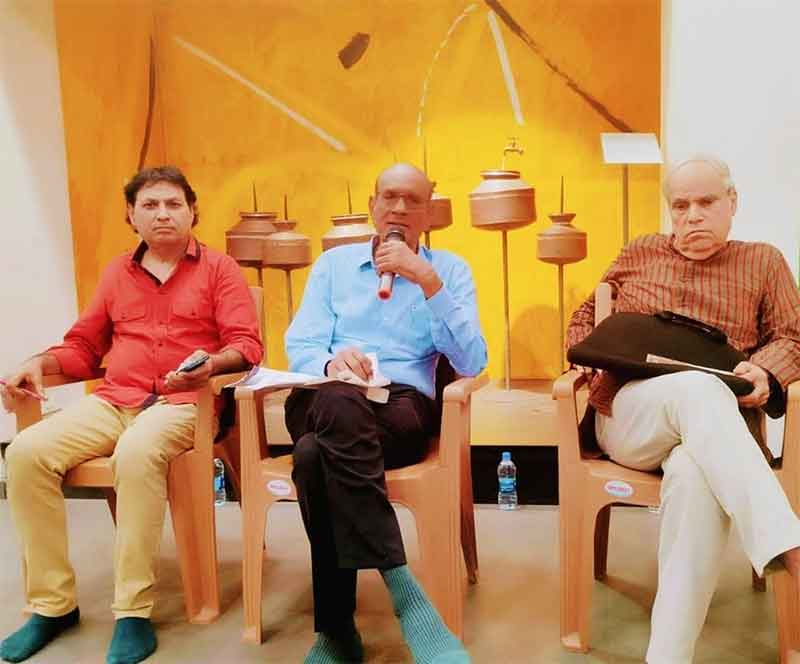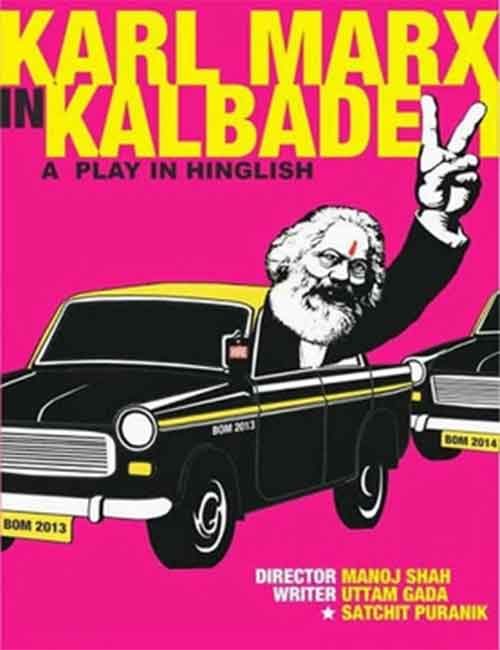
The current urban crisis is best reflected in two books in Hindi published in Mumbai recently. One is by Jitendra Bhatia, an IIT trained chemical engineer and prominent Hindi writer, and the other is by Vijay Kumar, poet and critic. In translation the title of Bhatia’s book suggests that cities are engulfed by a jungle of cement and concrete and Gupta’s also talks of Mumbai as a city lost in the mania for the so called development.
Not enough is being written on the subject even in English so it is significant that two creative Hindi writers are writing serious non fiction on cities.
Indeed Mumbai is now in the grip of big builders. Mangal Prabhat Lodha, one of the biggest property developers in the country , is also the guardian minister of the suburban district of Mumbai and a former president of the Mumbai unit of the BJP. He offered to resign on December 19 when charges of corruption were levelled against him in the legislative council in Nagpur.
One is confronted by he builder raj everywhere, cement and concrete dust and smell pervade the air, the most conspicuous vehicles on the road are the monstrous cylindrical concrete mixer trucks blocking footpaths in front of construction sites , causing traffic jams and their heavy weight contributes to the deterioration of the city’s notorious roads.
Yet, the authorities live in denial, sing praises of development. I noticed this during two presentations made in Mumbai recently, one by the municipal commissioner I.S. Chahal, and the other by the commissioner of MMRDA, Mumbai Metropolitan region development authority, Sanjay Mukerjee which I listened to carefully and much of the media missed the events.
The crisis in Mumbai is worse as the term of the municipal corporation ended long ago in March, 2022 and it is now under the administration of the commissioner. The commissioner spoke in a newly built government building in Prabhadevi which has itself flouted civic norms, it has not built the mandatory a car park though it generates a lot of car traffic and so cars are illegally parked in the vicinity creating traffic hazards.
The crisis is also worsening as most of the planning and infrastructure work is for the rich, for property development. In no other major city in the world are cars lakhs of cars allowed to be parked free on roads causing great hindrance to pedestrians and vehicular traffic.
Mumbai is now much more polluted than Delhi but instead of attending to the deteriorating quality of life problems, the authorities are planning to create a third city, next to Mumbai and Navi Mumbai, all indications are that the land acquired cheap from the local people will be sold at high rates to the rich with their insatiable appetite for second, third, large luxury homes.
The hinterland with sparse population being opened up with new Metro rail lines in which ridership will be very poor but it will be an assurance to builders about connectivity for future growth. An ambitious trans harbour 21 km link bridge across the sea connecting Sewree in Mumbai with neighbouring Raigad district will be inaugurated in a few weeks providing a quick access to the wealthy. This is a dream project of the rich, the idea was initiated by J,.R.D. Tata way back in 1981.
The rich are now running short of space in the island city after their completing the seizure of lands of textile mills and other industries and displacing of lakhs of ordinary people. They are now eyeing the prime land of Dharavi, reputed to be the largest slum area in the country and all sorts of concessions are being given to the Adani group. To make the project financially viable several acres of land of the railways and the big nature park of Dharavi is being eyed for housing the rich.
Also on the drawing board are big colonies of Dalits including Mata Ramabai Ambedkar Nagar in Ghatkopar named after Dr Ambedkar’s first wife, and BDD chawls in the heart of Mumbai built by the British early last century for workers and with large open spaces . Yet, there are no protests by dalit groups which are otherwise so vocal about their identity.
Mahesh Zagade a public spirited retired IAS officer, says at the heart of Dharavi beats an economic pulse that defies conventional wisdom. Unlike systems skewed in favour of the privileged elite, Dharavi’s economy is a testament to the power of the masses. The entrepreneurial spirit thrives here, with small-scale enterprises fueling a dynamic economic landscape. This stands in stark contrast to the prevailing notion that economic success is the exclusive domain of the elite.
Zagade is a rare phenomenon amidst a disastrous slide in bureaucratic standards. Gone are the days of public spirited bureaucrats like J.B. d’souza and S.S Tinaikar, former municipal commissioners, and Madhav Godbole, former union home secretary.
The trouble is MMRDA is indulging in all these projects incurring big debts with serious consequences for the state’s economy and the well being of the present and next generation.
The malaise has now engulfed Pune as well, it is a depressing sight as one goes from Mumbai to Pune, with a jungle of high rises, more dense than in Mumbai. It is only when one goes to the old historic Pune with its rich tradition of social reform, education and architecture that one finds some relief
The real challenge now is to save the Sahyadri hill ranges which are already being invaded for greenfield cities, some of them disasters.
With this rapid transoformation in favour of the wealthy we are now likely to suffer from amnesia about the better days of the past that is why books like those of Bhatia and Vijay Kumar are so important.
Bhatia looks at several cities including Jaipur, the old planned city where his family shifted after the horror of partition which he describes so poignantly. He also talks of Kolkata and Mumbai where he lived for many years and the family’s nostalgia for its days in Lahore.
He recalls Khwaja Ahmed Abbas’s early important film on city life’s contradictions Shahar Aur Sapna and making it a point to meet him even when he was a college student in Mumbai. Today that Sapna has become a dystopia, a dread for the future. He also recalls a play done by IIT students depicting the housing crisis in Mumbai, based on a story by Krishen Chander.
Incidentally,the establishment is now picking up the imagery, concepts of the Left for showing that it also means well for the citizens. The MMRDA commissioner in his recent presentation invoked Sahir Ludhianvi’s song Woh Subaha Kabhi to Ayegi.
Vijay Kumar’s book Shahar jo Kho Gaya (a city which is lost) is all about Mumbai covering a wide range of topics from Urdu writer Manto’s Mumbai to the communist commune in Khetwadi and the rich world of Marathi literature and theatre.
Vijay is also a good thinker on the human condition itself. This is further clear from his observations mentioned in a very significant article by Krishnat Khot, winner of the Sahitya Akademi award winner for his Marathi novel Ringaan in daily Loksatta today.
This novel is also very significant for the reason it is about rural life and displacement of humans and animals by the so called development. This is rare in fiction which is dominated by urban life.
Khot’s starting point is his learning of real life problems as a teacher in a school for children of families displaced by dams and run by a respected leader of the Peasants and Workers party Naganath Nayakawadi, former MLA.
He met parents of these kids and heard of their suffering, loss of their livelihood, their habitat, even traces of their memories themselves were being removed. He also found an unusual sight, he noticed that a group of buffaloes from the affected areas were very different, their had more hair on their bodies, they stared at humans with suspicious eyes. Khot then realised that after their displacement, the buffaloes found themselves isolated and found new ways to get used to their new environment, they had formed a group of buffaloes to protect themselves from predators.They had reinvented themselves in a way.
He found that here is scientific evidence to show that humans and other animals have their brains fitted with a mechanism which can help them survive in new hostile environments.
And here he quotes Vijay’s reflections about human craving of his lost world, a lost culture, humans desperately search for their roots, that is why we find solace in nature where we grew from.
Vijay says we are being displaced, uprooted from our language, culture, human bonds with families, from lanes and bylanes.We have become wandering refugees carrying our value systems trying to save ourselves from a world of falsehood and perversion. It is as if we are cursed to forget the past. In such a situation when a work of art points to a lost world, it is like an electric experience,makes us think that it is possible to restore our lost life.
Vidyadhar Date is a senior journalist















































